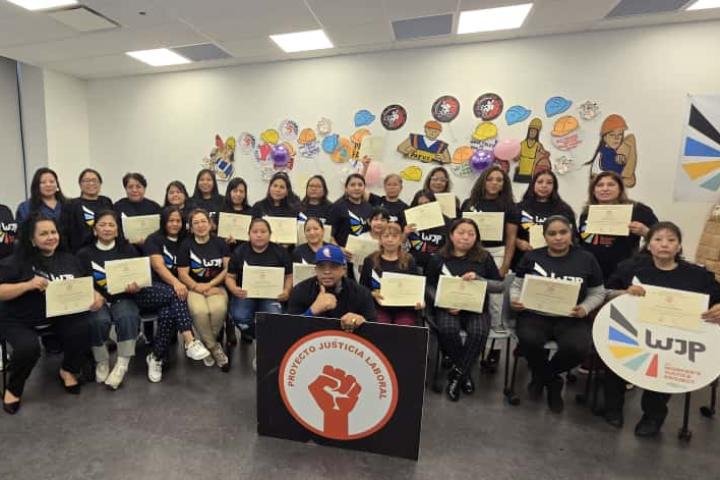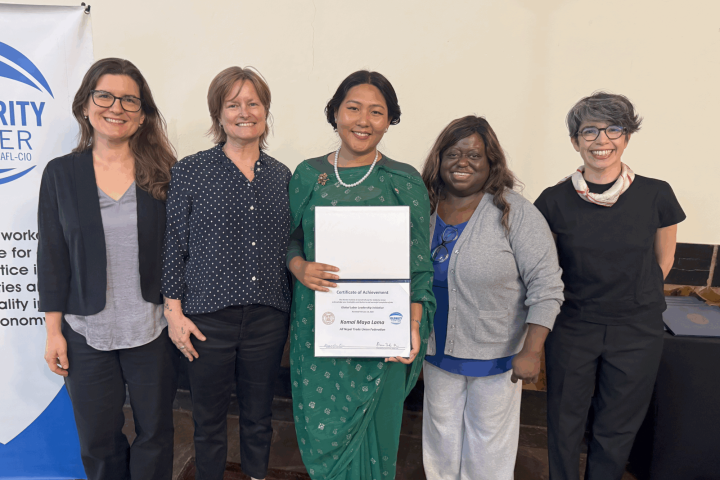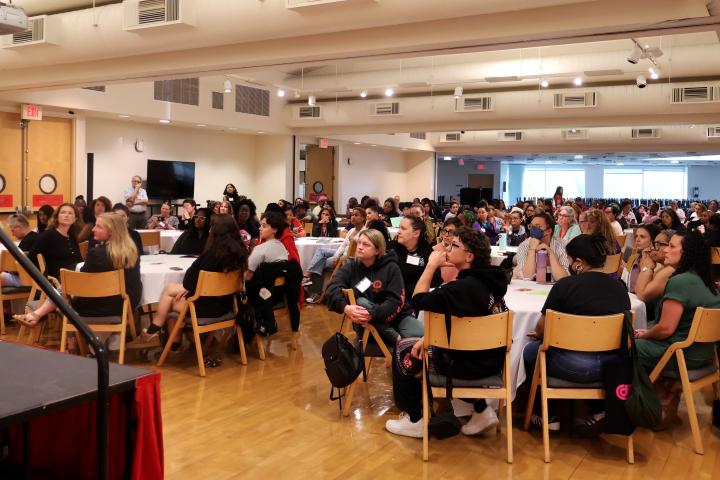
Beyond Resilience… How Collective Bargaining Creates Conditions For A Sustainable Positive Work Environment
By John August/Director of Healthcare Labor Relations and Partner Programs at the Scheinman Institute
“Resilience” has become a part of our daily conversation with each other and within ourselves as we all cope with the year-long impact of the novel coronavirus that causes the deadly disease COVID-19. Most people experience resilience in various ways and degrees in their daily lives.
Most of us are well aware that among frontline health care workers in all settings, “resilience” is central to each day.
What is “resilience”?
“Resilience is the ability to adapt to difficult situations. When stress, adversity or trauma strikes, you still experience anger, grief and pain, but you're able to keep functioning — both physically and psychologically. However, resilience isn't about putting up with something difficult, being stoic or figuring it out on your own. In fact, being able to reach out to others for support is a key part of being resilient.” (“Resilience: Build skills to endure hardship” (Mayo Clinic e-newsletter, October 20, 2020.)
Understandably, after a whole year of the experience of living with the threat of the virus, and with the roll out of vaccines underway, there is growing intensity and interest in the view of the future…”after COVID-19”…a world we all want, but a world that has in many ways forced us to re-evaluate our lives in society based on that which existed pre-COVID-19.
For example…
There is a heightened recognition that there exists disparities in COVID-19 infection rates, severe illness, and death based on race and ethnicity…even though we knew plenty about racial and ethnic disparities in health care and healthcare outcomes PRIOR to the pandemic.
There is heightened recognition that supply chains, care readiness, readily accessible and effective Personal Protective Equipment (PPE), bed capacity and other large gaps in our healthcare system were exposed during the pandemic, even though we knew these challenges existed PRIOR to the pandemic.
There is heightened recognition that many of our school buildings were in poor condition and unable to provide a safe environment in which to teach and provide all services to our children, even though we knew of these challenges PRIOR to the pandemic.
There is heightened awareness that the shorn “safety nets” in our country were fully exposed during the pandemic whether it was unemployment compensation, sick and family leave, adequate food and housing access, or lack of affordable child care, even though we knew of these challenges PRIOR to the pandemic.
And more…
I suggest that if we are to learn from our individual experience with resilience, we have an opportunity to think systemically and collectively about the future. What is the value of resilience, if that strength in the face of trauma does not create the conditions for significant improvement in the conditions that pre-existed the pandemic and will certainly persist in a post-pandemic world?
I suggest further that life in the post-pandemic world without addressing systemic problems will deepen social polarization…after all, if the threat of the virus is gone, and conditions of daily life do not change for the better, we can only imagine the impact on the lack of social cohesion that got us to this point in time.
Indeed, the frontline health care workforce has practiced resilience. However, doctors, nurses, and all frontline caregivers know the truth…that the staffing shortages that existed prior to the pandemic will be with us after the pandemic…and with those shortages, all the resilience in the world will not save our workforce from trauma and stress and burnout.
If the problems nurses experience aren’t remedied, the United States could end up with a severe shortage just as the need for nurses is growing significantly. The Bureau of Labor Statistics projects that an average of this year through 2029 will require 176,000 additional nurses, and I doubt that the country can meet that need. The shortage was predicted even before the coronavirus pandemic.
Aging baby boomers create a larger population of patients in need of care, and a large number of nurses over 50 will retire soon. Nursing schools don’t have enough faculty to expand the nursing workforce. Environment issues — and insufficient staffing, in particular — also contribute to the problem.
A recent survey by NurseGrid revealed that the percentage of nurses reporting that they are suffering from burnout has doubled during the pandemic, to more than 60 percent in December from 25 percent in April. (“COVID-19 is Probably Going to End My Career”, New York Times, Theresa Brown, February 25, 2021).
And more on burnout…
“Burn-out has always been a real problem in health care, but we have pushed the envelope way beyond previous comprehension. How do we help in systems that are so stretched? The grief around the loss of a normal structure is real even when that structure was far from perfect.
It is time to consider what and where our greatest risks are. How many will leave healthcare all together? What can we do to mitigate these losses?” (How Resilient are Our Teams as We Come Out of This Pandemic?) Kim Barnas, President Catalysis, Catalysis BLOG, March 1, 2021).
Catalysis is a research and think tank in central Wisconsin, an outgrowth of the success of the ThedaCare Health System which was led by Dr. John Toussaint. Under Dr. Toussaint’s leadership, ThedaCare adopted and implemented the Toyota Production System (TPS) and in so doing became one of the highest performing health systems in the nation.
As many know the TPS is founded on the empowerment of the frontline to learn the tools of rapid and continuous improvement in quality, customer service, and waste elimination. W. Edwards Deming is among the leaders of industry earlier in the 20th century credited with the foundational principles that evolved into the TPS. What is not so prominently known is Deming’s commitment to creating a work environment in which every worker experiences “Joy in Work”.
“It would be better if everyone worked together as a system, with the aim for everybody to win. People are entitled to joy in work” (W. Edwards Deming Institute Website).
To many, the concept of “Joy in Work” sounds Pollyannaish or out of reach, or simply unattainable. But Joy in Work is a scientific concept and achieved through systems approaches to work organization and systems outcomes.
Thousands of businesses and organizations have adopted and implemented Deming’s ideas into their production processes over the past 40 years in manufacturing, retail, hospitality, and healthcare. Quality and quality improvement as a continuous goal have come to dominate much of the way American and other nations approach business organization. None of these efforts, whether you call the approaches LEAN, Six Sigma, or other myriad industrial systems based on scientific approaches to continuous improvement are successful without JOY in WORK.
The unionized sector of business in the U.S. has had difficulty making this adaptation.
But when you look at the Labor Management Partnership (LMP) of Kaiser Permanente, there has been a major effort underway for more than 10 years which invests in the education and empowerment of frontline staff to engage in daily problem-solving in small teams in every unit and department across the largest not-for-profit health system in the nation.
The experience in the LMP demonstrates the relationship between systems of frontline-driven problem solving and improvement, and the joy in work derived from being part of a highly productive team. It is these foundational dynamics which deter burnout and high turnover, while enhancing high employee engagement.
Embedded in the collective bargaining agreement which covers more than 115,000 unionized frontline caregivers, their managers and physician colleagues across ten states, providing care for more than 12 million people, there are the actions and guidelines to develop and maintain high performing teams. (See National Agreement of the Coalition of Kaiser Permanente Unions, pp. 11-16)
Those high performing teams are evaluated against key elements of high employee engagement, and these evaluations show a relationship in high performance in many health outcome measures and high employee engagement scores. (See Culture Matters, An Investigation into UBTs, Workplace Culture, and Performance, Executive committee of the LMP Strategy Group, J. Peter Nixon, Director of Metrics and Analytics of the LMP, January 17, 2012).
Year in and year out, Kaiser Permanente is rated as among the best places to work in the nation, with low turnover and high employee engagement. (See 2019 Glassdoor, Best Places to Work, among other rating agencies including Forbes Magazine).
The successes at Kaiser Permanente in curbing burnout and promoting high engagement are based on the democratic principles of internal union processes and the utilization of an interest based problem solving collective bargaining scheme. The LMP is founded on the notion that frontline experience and voice are not just nice things to have, but essential elements to achieve high performance in clinical quality and safety, customer and patient experience, affordability and efficiency, and creating the best place to work.
Creating and sustaining the best place to work is as important as the other quality measures we normally associate with the best health outcomes for patients.
And if we have learned anything from the experience of burnout and trauma at work in health care, before, during, and after the pandemic, we have learned that top-down programs and recommendations for how to work are not successful.
Frontline empowerment and input into problem-solving are concepts embedded in the continuous quality movement. Joy in Work is not a preferred state…it is a science.
We must learn the tools of improvement and build systems to support them if we are to look beyond the pandemic and beyond resilience.


